How MRI and Ultrasound Works
- Magnetic resonance imaging (MRI) does not use X-rays to take images of body organs.
- It is possible to take pictures of any part of the body at almost any angle using MRI.
- Ultrasound uses high frequency sound waves to create images of various body parts and organs.
- Both MRI and ultrasound are non-invasive procedures.
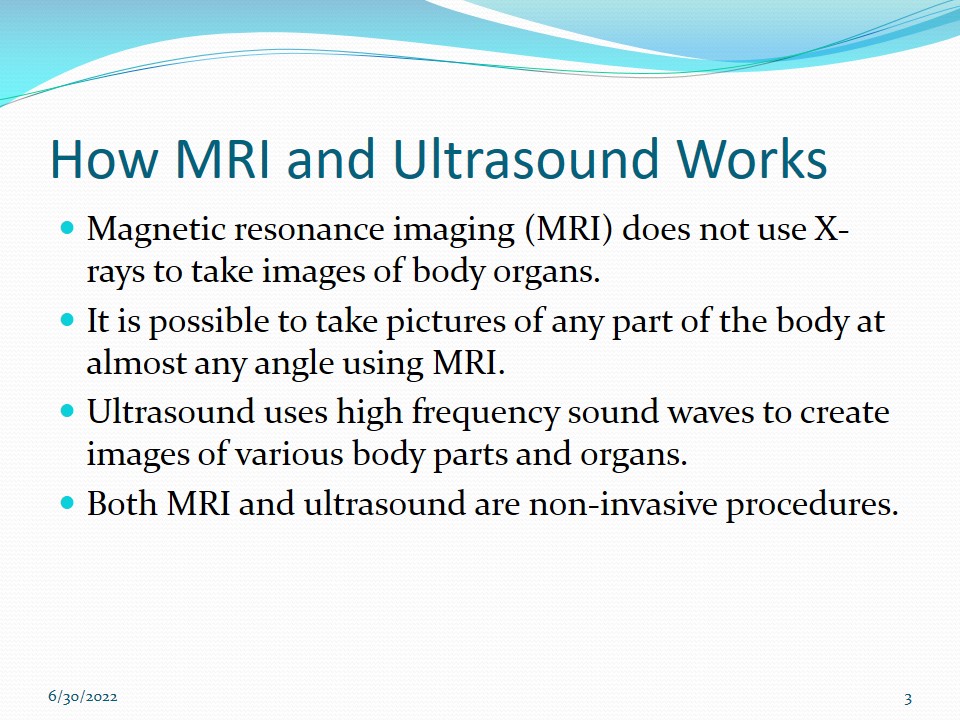
MRI vs. Ultrasound
- Neonatal cranial ultrasound is used in detecting brain injury in preterm infants and can be used repetitively without harming the infant.
- MRI is used for the same purpose of imaging the brain but it is time consuming and is hardly used repetitively.
- Ultrasound scans help in determining the extent of intracranial hemorrhage.
- Ultrasound is fast and inexpensive and can be done at the bedside without any side effects.
- MRI is expensive, time consuming and resource consuming thus not readily available.
- MRI is however better in predicting adverse neurodevelopmental outcomes even at the age of 2 years compared to cranial ultrasound.
- Conventional MRI is powerful in detecting white matter abnormalities and analyzing effects in preterm babies, but ultrasound cannot.
- There is difficulty in establishing superiority of MRI at term to sequential cranial ultrasound from birth to term.
- Cranial ultrasound in very low birth weight infants has high reliability in determining cystic white matter injury.
- However, it is poor in detecting non-cystic injuries, which are more common.
- MRI however at term is sensitive enough to WM injury of non-cystic form.
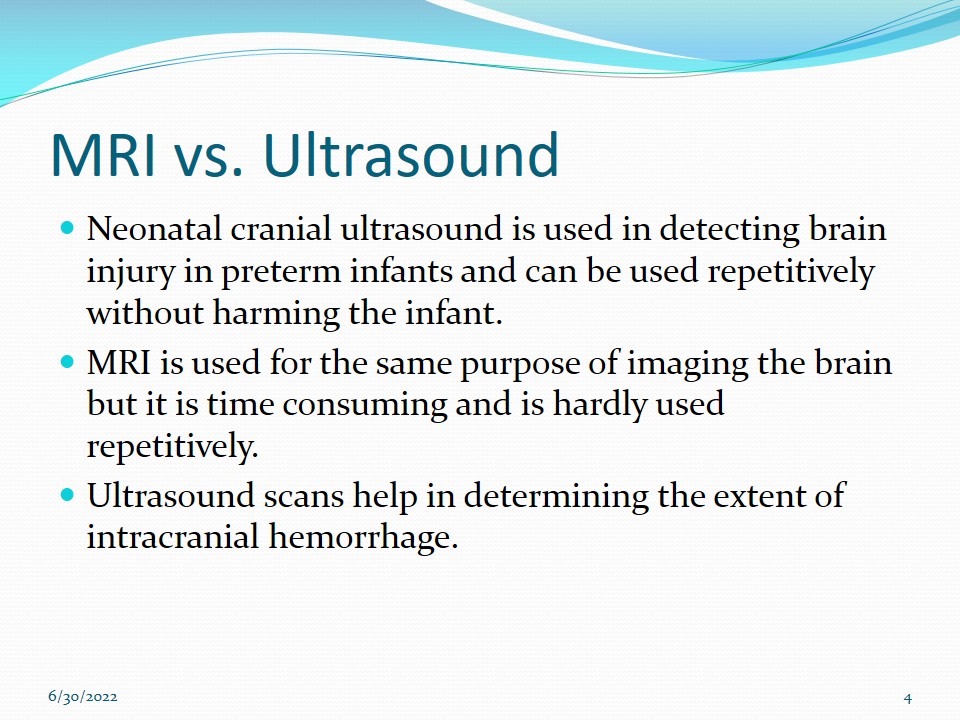
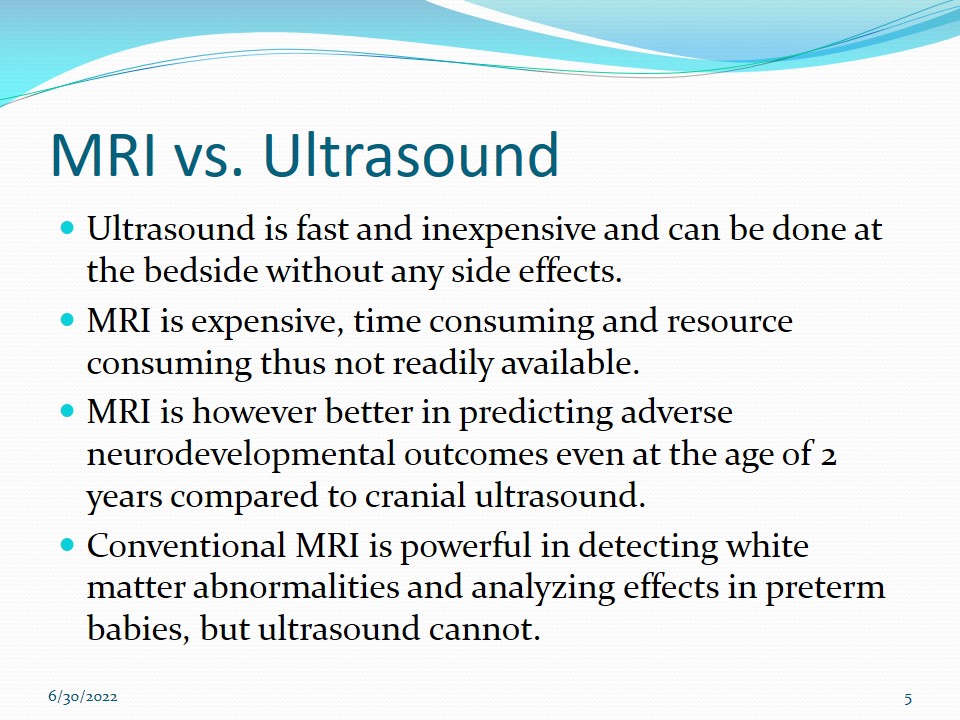
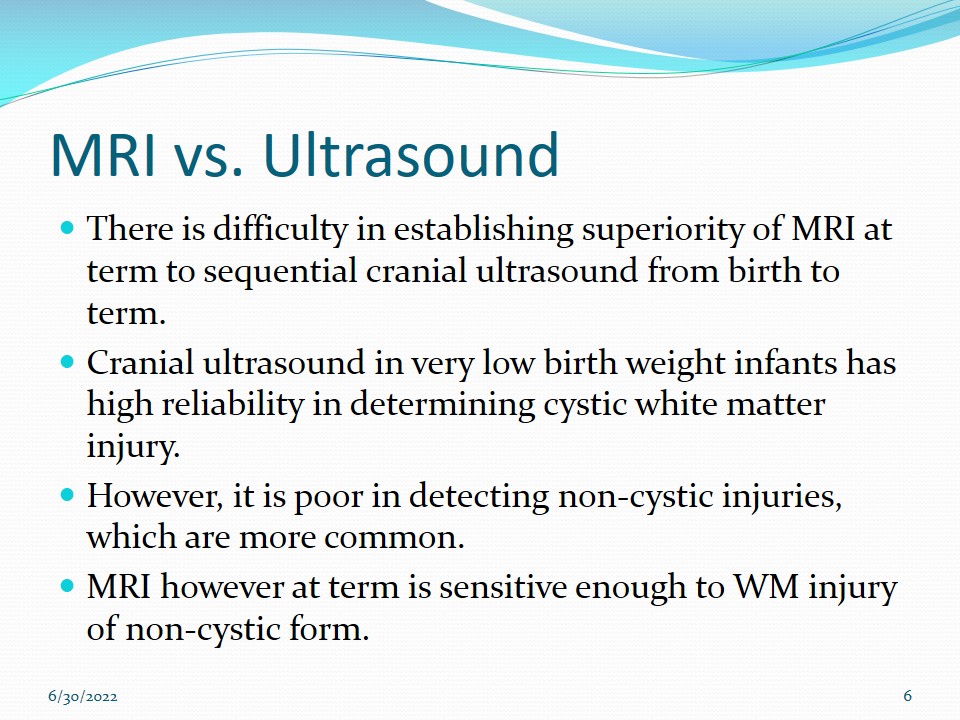
General Observations
- Conventional MRI adds insignificant clinical information to term age infants with normal cranial ultrasound.
- Ultrasound therefore emerges as not only beneficial but also cost effective than MRI in detecting low risk disabilities.
- MRI techniques can however be useful in detecting abnormalities at an earlier age in infants.
- Ultrasound has been widely used in effective detection of abnormal motor development.

Conclusion
- Ultrasound is highly favored in sensing severe abrasions of white matter in preterm infants.
- MRI is however useful for diagnosis of less severe damage.
- MRI is very effective for final diagnosis at term if it is done within 3 weeks of life.
- MRI has the potential of detecting a wide range of white and gray matter defects and it should be considered on a routine basis for preterm babies.
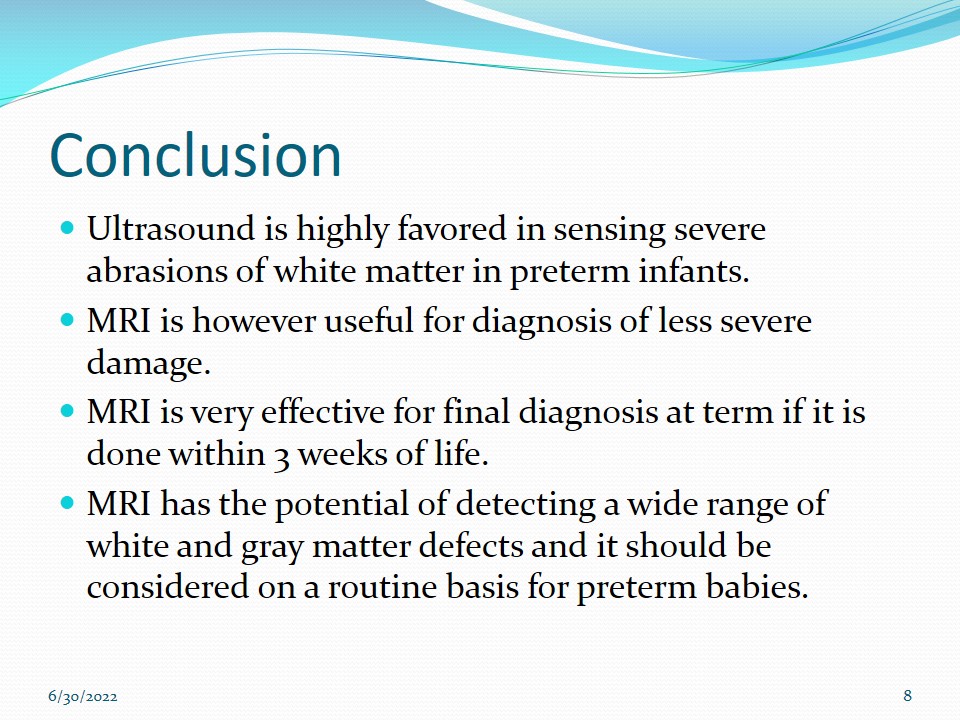
Reference List
Bellinger, R. 2008. “What is MRI.” MRI Tutor. Web.
Debillion et al, 2003. “Limitations of ultrasonography for diagnosing white matter damage in preterm infants.” Arch Dis Fetal Neonatal Ed; 88:F275-F279.
Dunn, M. 2010. “Ultrasound versus MRI at term.” Neo Notes Journal Club. Web.
Horsch et al, 2010. “Cranial ultrasound and MRI at term age in extremely preterm infants.” Arch Dis Child Neonatal Ed; 95:F310-F314.
Inder, T E. 2003. “White Matter Injury in the Premature Infant: A comparison between serial cranial sonographic and mr findings at term.” AJNR Am J Neuroradiol 24: 805-809.
Menkes, J H. et al. 2006. Child neurology. Lippincott Williams & Wilkins. Philadelphia. P.1186.
Nongena et al. 2010. “Confidence in the prediction of neurodevelopmental outcome by cranial ultrasound and MRI in preterm infants.” Arch Dis Child Fetal Neonatal Ed. Vol 95. No. 6.
Rademaker et al, 2005. “Neonatal cranial ultrasound versus MRI and neurodevelopmental outcome at school age in children born preterm.” Arch Dis Child Neonatal Ed; 90:F489-F493.
Smith, S E 2011. “What is medical imaging.” WiseGeek. Web.
“Technology & Innovation.” 2011. MITA. Web.
“What is Ultrasound (Sonography).” 2011. ARDMS. Web.